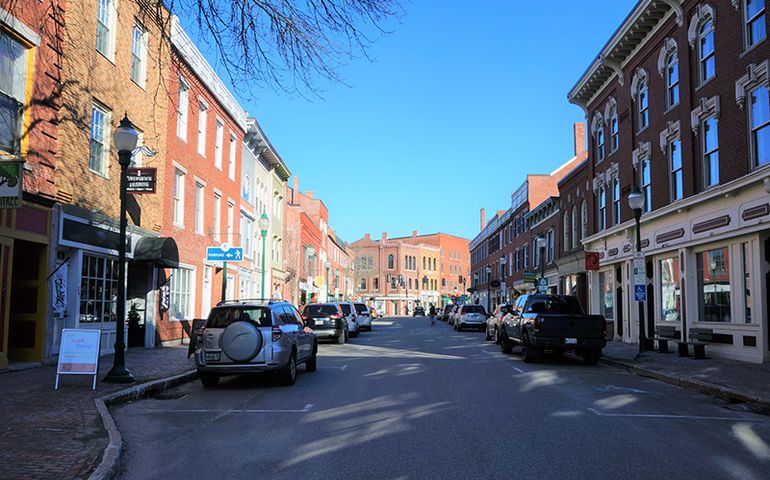Real estate across Maine is at risk of being flooded out, and new study pinpoints where
 File Photo
In Gardiner, half of the commercial real estate is at risk of being flooded badly enough to become unusable or unsafe, a new study finds.
File Photo
In Gardiner, half of the commercial real estate is at risk of being flooded badly enough to become unusable or unsafe, a new study finds.
Half of the commercial real estate in Gardiner — 60 out of 119 properties — is at risk of being shuttered by floods before 2051, a new study reports.
Across Androscoggin County, more than a quarter of all commercial properties face that risk, according to the research by First Street Foundation, a New York-based climate science nonprofit.
The findings are among those released Monday in what First Street said is “the first-ever nationwide community-level flood resilience report.”
“National Risk Assessment: Infrastructure on the Brink” examines the flood risk over the next 30 years for every town, city and county in the 48 contiguous states. The study pinpoints each property to determine whether it’s at “operational risk” of becoming unusable or unsafe. Besides commercial real estate, the study calculates the flood risk for residential properties, roads and infrastructure.
Nationwide, 20% of all commercial properties and 14% of all residential ones are at operational risk, the study reports. In addition, flooding endangers 23% of all roads, 25% of critical infrastructure such as utilities and hospitals, and 17% of all social infrastructure facilities such as schools.
In Maine, there are 23,544 residential properties, 11,618 miles of roads, 1,989 commercial properties, 244 infrastructure facilities and 292 social facilities at risk today, First Street said in its report.
Other findings:
- In addition to having Maine’s highest percentage of commercial properties at risk, Gardiner contains the largest portion of critical infrastructure in danger — 100%.
- Among counties, Knox is estimated to have the highest percentage of critical infrastructure at risk, 42.6%.
- York County is projected to have the highest growth in at-risk commercial properties over the next 30 years, 5.2%, representing an additional 126 buildings.
A regional study last month found that the towns of York, Kennebunk and Wells have $645.5 million in property at risk from rising sea levels and are “highly vulnerable” to climate-related property devaluation.
Overall, however, Maine isn’t likely to be affected by flooding the way states such as Louisiana and Florida are, according to First Street. But as the new study results show, climate change and other factors put a growing portion of Maine at risk of serious floods, even far from the coastline.










0 Comments